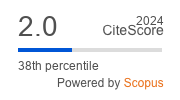Objective assessment of diagnostic tests
Keywords:
Sensitivity, Specificity, Positive predictive value, Negative predictive valueAbstract
The whole point of a diagnostic test is to use it to make a diagnosis,thus the obvious need is to know how accurately aparticular diagnostic test detects patients with or without adisease. In order to know it, a clinician or a researcher shouldhave a basic understanding of the principles of objective appraisalof diagnostic tests. In this short review, the authorpresents the most common biostatistical methodology forassessment of the validity of diagnostic tests. Definitions andinterpretations of sensitivity, specificity, positive and negativepredictive values are also provided together with how theyare calculated.References
Annonymous. Wikipedia: Thomas Bayes. 2008
[cited November 16th, 2008]; Available from:
http://en.wikipedia.org/wiki/Thomas_Bayes
Lok AS, McMahon BJ. Chronic hepatitis B. Hepatology 2001;34:1225-41.
Cadranel JF, Rufat P, Degos F. Practices of liver biopsy in France: results of a prospective nationwide survey. For the Group of Epidemiology of the French Association for the Study of the Liver (AFEF). Hepatology 2000;32:477-81.
Greenhalgh T. How to read a paper. Papers that report diagnostic or screening tests. BMJ 1997;315:540-3.
Altman DG, Bland JM. Diagnostic tests. 1: Sensitivity and specificity. BMJ 1994;308:1552.
Altman DG, Bland JM. Diagnostic tests 2: Predictive values. BMJ 1994;309:102.






